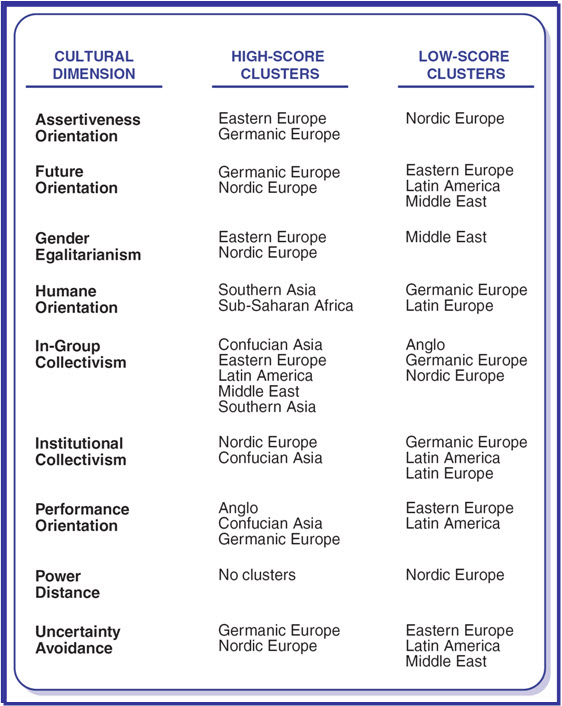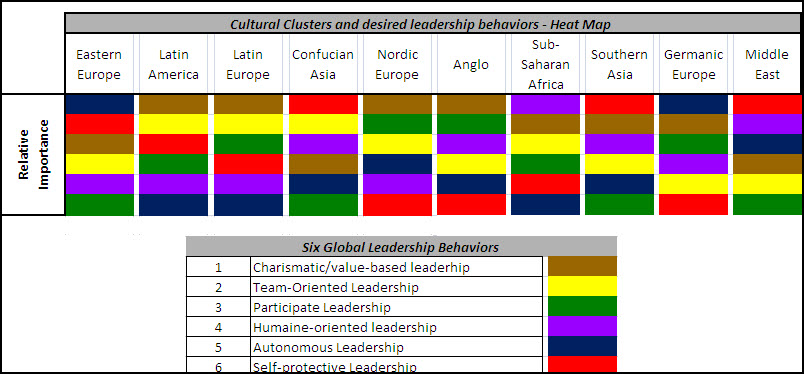Leading globally is a complex reality for leaders today and commands a shift in cultural biases and preferences; different cultures have diverse ideas on what they anticipate from their leaders. A global leader’s role is fundamentally different from those who operate locally, in that they must understand cross borders complexities involving cultures, history, legal, regulatory, and economic factors that drive their work. Leaders must contend with all of these external factors and be able to recognize that most are outside of their control; leaders are often told what to do and not trained to overcome the challenges (CCL, 2012).
Several years ago, I led a small team of technology developers and computer engineers with vast experience in the field and good working relationships. The work was all performed locally in the US and my leadership style could be characterized as delegating. The team was experienced enough to work independently and interactions were optimal. Soon after completing a major project, we were asked to deploy the solution achieved by the project globally. Accomplishing this objective in a financially viable way, required us to significantly augment our staff with technology resources at a low cost location; in our case India. This was our first introduction to working cross borders and cross cultures. The complexities unraveled rapidly and soon we found ourselves in a precarious situation, arising from poor communications, cultural sensitivies, time zone differences and our ability to influence work quality.
We eventually partnered with the overseas leadership who helped us navigate the cultural barriers and achieve our goals and objectives in a very directive manner, however, our local team was no longer as enthusiastic as when the project was fully under their control.
Several well-known studies offer key findings that can assist leaders in learning how to adjust their styles in order to operate effectively globally. Two of the most cited and respected studies offer clear characterizations of global cultures; concerning dimension of culture, research by Hofstede (1980, 2001), who identified five major dimensions in which cultures differ: power distance, uncertainty avoidance, individualism – collectivism, masculinity -femininity, and long-term – short-term orientation. In the area of culture and leadership, the studies by House, Hanges, Javidan, Dorman, and Gupta (2004), is one of the strongest research studies to date; Culture, Leadership, and Organizations: The GLOBE study of 62 Societies. (Northouse, 2013).
GLOBE research clustered the data obtained from their study into regional country clusters based on cultural similarities of the groups offering meaningful generalizations about culture and preferred leadership styles in order of relative importance.
Country Clusters and Dimensions


Preferred Leadership Style
GLOBE researchers identified six global leadership behaviors:
Charismatic/Value-based leadership – Being a visionary, inspirational, self-sacrificing, trustworthy, decisive and performance oriented.
Team-Oriented leadership – Collaborative, inclusive, diplomatic, not malicious, administratively competent.
Participative leadership – Participative and not oppressive.
Humane-oriented leadership – Modesty and sensitivity to other people.
Autonomous leadership – Autonomous and unique.
Self-protective leadership – Self-centered leadership style, status conscious, conflict inducing, face saving and procedural.

The GLOBE project provided powerful insight about how cultures around the world perceive leadership and what expectations they have of global leaders, thus offering a powerful instrument for leaders to learn and apply when discerning what is viewed as good or bad leadership in a general way and how they apply to the global country clusters. Critics of the research note that some of the cultural clusters behaviors are difficult to interpret and limits leadership to perceptions of what cultures expect from leaders rather than what a leader can do (Northouse, 2013). Nonetheless, the study helps raise leaders awareness of cultural differences and enhance their communication styles.
References
CCL Podcast. Global Leaders: The Reality of Multiple Complexities. 2012. Retrieved from: http://www.ccl.org/leadership/podcast/transcriptGlobalLeaders.aspx
Northouse, P.G. (2013). Leadership: Theory and Practice. Los Angeles: Sage Publications.
